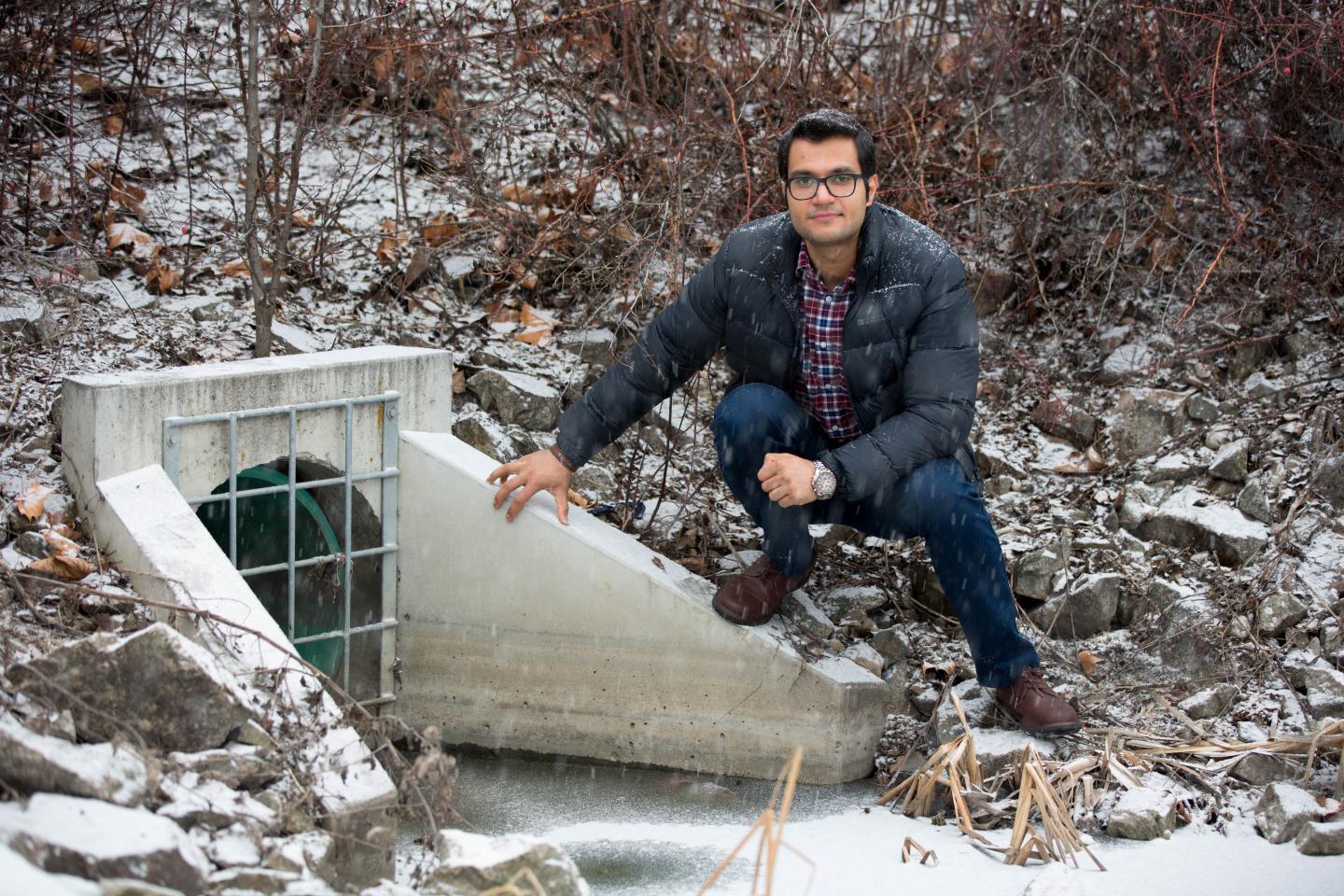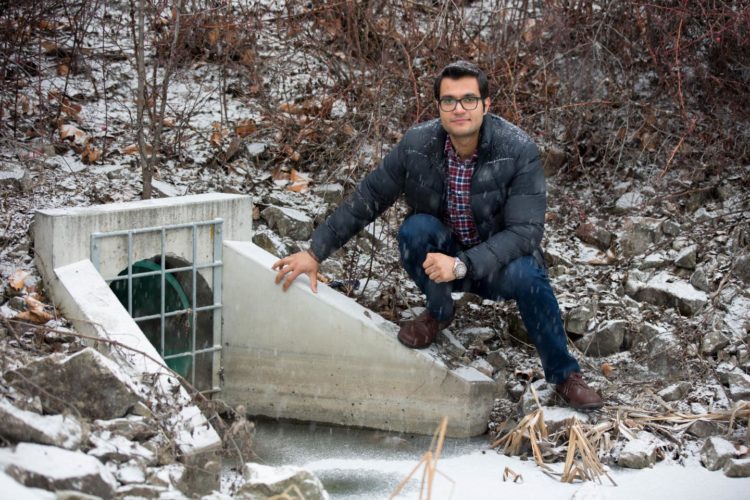New design approach needed to handle impact of climate change

Credit: UBC Okanagan
During a typical Canadian winter, snow accumulation and melt–combined with sudden rainfalls–can lead to bottlenecks in storm drains that can cause flooding.
With that in mind, researchers at UBC’s Okanagan campus have been examining urban stormwater drainage systems, and they too have concerns about the resilience of many urban drainage systems.
A recently published paper from the School of Engineering says existing design methods for urban drainage systems aren’t going far enough to withstand possible catastrophic storms or even unpredictable failures during a moderate storm.
“As engineers, we run simulations of possible catastrophic events, and current systems often do not fare well,” says doctoral student Saeed Mohammadiun. “We are seeing sources of overloading such as structural failures, severe rainfalls or abrupt snowmelt stressing these systems.”
Add any extreme situation including quick snowmelt or a heavy and sudden rainfall, and Mohammadiun says many systems aren’t built to handle these worst-case scenarios. Mohammadiun has conducted several case studies of drainage systems in major urban areas around the world. He has determined many current urban standards designed for a 10-to-50 or even 100-year storm scenario are not meeting the increasing demands of climate change as well as intrinsic failure risk of networks’ elements.
“Conventional, reliability-based design methods only provide acceptable performance under expected conditions of loading,” he says. “Depending on the system, if something breaks down or there is a blockage, it can result in a failure and possible flooding.”
According to Mohammadiun, the resiliency of a system is not just dependent on the load it can handle, but also on its design and build. Many do not take into account the effects of climate change or unexpected weather conditions.
To establish an efficient resilient system, Mohammadiun says it is important to consider various sources of uncertainty such as rainfall characteristics, heavy snowfalls followed by a quick melt and different possible malfunction scenarios along with budget constraints, he says.
“Building or improving the resilience of urban stormwater drainage systems is crucial to ensuring these systems are protected against failure as much as possible, or they can quickly recover from a potential failure,” he adds. “This resilient capacity will provide urban drainage systems with the desired adaptability to a wide range of unexpected failures during their service life.”
The research points to several measures municipalities can proactively address the issue. Municipalities could build bypass lines and apply an appropriate combination of relief tunnels, storage units, and other distributed hydraulic structures in order to augment drainage system capacities in a resilient manner.
With the recent heavy snowfalls across Canada, Mohammadiun says the silver lining when it comes to drainage is that it takes snow time to melt whereas heavy rainfall puts an immediate stress on these systems. But from the engineering point of view, it is necessary to consider both acute and chronic conditions.
Not surprising, the research shows that urban drainage and stormwater systems that are built or modified to be more resilient, will handle extreme weather events more effectively and efficiently than conventional designs.
###
This research was recently published in Hydrological Sciences.
Media Contact
Patty Wellborn
[email protected]
250-317-0293
Original Source
https:/
Related Journal Article
http://dx.





